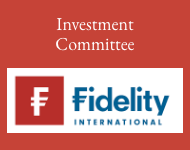Marcel Bradshaw, head of UK Retail, Orbis Investments takes a view in the light of current markets
The asset management world is split on many things. Debates rage around the advantages of active or passive management, or which fee structure offers the best value, and when it comes to investment style there are plenty of arguments on either side of the ‘growth versus value’ debate.
Often, an investor will lean towards one style more than the other, declaring themselves either ‘growth’ or ‘value’ based on their judgement as to which asset camp will fare better over the short, medium, or long term. But investing is a complex and highly nuanced endeavour. It makes little sense to take a dogmatic stance when there are opportunities amongst both growth and value shares.
Growth investors may scoff at this. Why bother with value shares when their chosen growth style has done remarkably well over the past decade or more? All the top performing funds in recent years have been run by growth investors and as a result have been the most successful, popular funds around. Why fix what isn’t broken?
Value investors are equally adamant about sticking to their guns. We know that over the very long-term, over several decades if not longer, that value has ultimately outperformed growth. Why not sit tight and stick with the proven historical winner?
As the usual disclaimer goes, past performance is not a reliable indicator of future results. Both growth and value shares carry risk of disappointment. The momentum driving growth shares ever higher could come to a screeching halt, and the “value” that value investors think they see may prove illusory.
It seems clear that we should not take an ‘either/or’ approach to investing. No market environment will last forever. As the late Sir John Templeton once said, the four most dangerous words in investing are “this time it’s different”.
It is never different. Investors think it’s different due to ‘recency bias’ – the tendency to place far more weight on what has happened in recent memory at the expense of the valuable lessons of the past. This is perfectly natural, but it’s extremely important to resist this bias.
The first step is to recognise that timing the changes in market sentiment is impossible. There is no bell that rings when it is time to switch places between growth and value and it would be unwise to attempt to predict any turn in markets. The good news is that you don’t have to. There is room for both growth and value shares in a properly diversified portfolio.
This message is particularly relevant today for investors who are heavily exposed to growth shares. While this has been a fantastic tailwind for years, the valuation gap between value and growth shares is at the widest it has ever been. Growth shares normally deserve to trade at a premium due to their superior fundamentals, but that premium today is at truly unprecedented levels, particularly in the US. The ‘winners’ continue to win and the success of the likes of Amazon and Microsoft has completely overwhelmed the performance of value stocks.
Taking a steady, level-headed approach to entering value and balancing it against growth assets could well prove to be the best way to handle this current environment. Importantly, we believe investors should avoid ruling out investments based on an arbitrary ‘camp’ they may have found themselves in. Examining the fundamentals of an asset and the future potential for long-term returns will always be of far greater help to an investor than following a market trend. The current trends may very well continue, and growth may well continue to surge ahead in the coming months and years, but we would argue that it is an increasingly dangerous assumption for an investor to make.




































